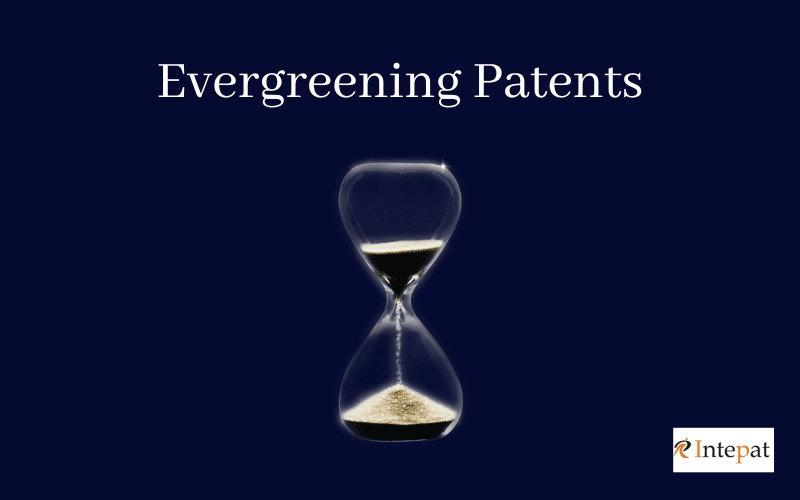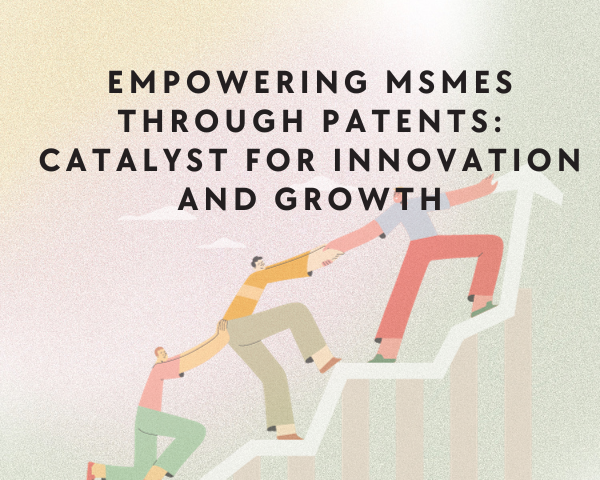Introduction
Patents are rights that can be enforced by the law and grant the owner the absolute right to use their innovations for commercial purposes for the duration of the patent. They must be novel, beneficial, original, and innovative in order to receive them. They are given to successful applicants for their special device, substance, method, or procedure. A patent is provided to the owner of the invention for a period of 20 years, on the expiry of which the products come into the public domain.
Contrary to the concept of patent protection, the Evergreening of patents can be understood as the procedure to extend the term of patent protection. The procedure can be termed a technique used by business entities to sustain the revenues from their products and obtain new patents.
Pharmaceutical companies generally adopt this practice of evergreening to launch the by-products of their already existing patented medicinal products. These companies apply for the evergreening of patents before the expiration of the patent protection and obtain a monopoly in the market. In this process, the entities even upgrade the existing patented products to obtain patents over the product for a longer period.
Evergreening and Indian Patent Law
The concept of evergreening has not found an explicit place under the Indian Patents Act 1970. However, Sec. 3 of the Act deals with non-patentable substances/products. Sec. 3(d) of the act states, “the mere discovery of a new form of a known substance or mere discovery of any new property or new use for a known substance or of the mere use of a known process, machine or apparatus unless such known process results in a new product or employs at least one new reactant.” This provision directs towards the prohibition of evergreening of the products for the purpose of patents.
The Indian Patent (Amendment) Act, 2005, has introduced the aforementioned provision in the Act with the aim of preventing the evergreening of patents. The amendment introduced the provisions for patents concerning pharmaceutical products in India for the first time.
Novartis Case
The insertion of Sec. 3 (d) in the Indian Patent Act 1970 led to the emergence of this case. In the present case, the applicant, i.e., Novartis, filed an application for the patent of a drug name GLIVEC before the Chennai patent office. The aforementioned application was another version of its Anti Leukaemia drug slightly different from the previous one for which a patent was granted in 1993. The application was, however, rejected by the Assistant Controller of Patent and Design, Chennai Patent Office, in lieu of Sec. 3 (d) of the Act.
On the rejection of the application, the applicant approached the Hon’ble Madras High Court through writ petitions in 2006 to declare the provisions of Sec. 3 (d) of the Act as unconstitutional due to its non-compliance with the TRIPS Agreement and violation of Art.14 of the Constitution. The petitioner argued that the Patent Officer was vested with arbitrary discretionary power to determine the enhanced efficacy was violative of the aforementioned provision of the Constitution.
In 2007, the case was transferred by the Hon’ble Madras High Court to the Intellectual Property Appellate Board. The Board heard and dismissed the petition on the ground that even though it satisfies the requirement of novelty and non-obviousness for patentability; however, it falls within the purview of Sec. 3 (d) of the Act.
The petitioner further reached the doors of the Hon’ble Supreme Court through the way of a Special Leave Petition in 2009 against the decision of the Board. In 2013, a two judge bench of the Hon’ble Apex Court dismissed the petition and held that the term ‘Efficacy’ under Sec. 3(d) of the Act only means ‘Therapeutic Efficacy’ and states that all drug properties are not relevant; the properties which directly relate to efficacy in the case of medicine is its therapeutic efficacy. The petitioner was unable to demonstrate that the “Beta Crystalline version of Imatinib Mesylate” has greater therapeutic efficacy than “Imatinib Mesylate,” i.e., the previous version of the patented drug.
As per the court’s observation, the purpose of the patent system is to deter patent extensions after the first 20-year term has passed, allowing other businesses to manufacture and sell the drug.
Criticism of Sec. 3 (d) of the Act
Patent protection for the just discovering of existing substances is expressly forbidden by Section 3(d) unless the known substance expresses considerable effectiveness in the new drug. As a result of this clause, such substances with minor changes are expressly excluded. The provision is criticized as being in violation of the TRIPS agreement due to the fact that it lacks both the general protection offered by TRIPS for all kinds of innovations as well as any specific guidance for incremental innovation. The court specifies therapeutic efficacy as the definition of efficacy. The term therapeutic efficacy is still ambiguous and does not specify what it constitutes. The court omits to explain why the subject matter does not have greater efficacy. As a result of the aforementioned view, India will not grant patent protection to any incremental innovation.
International Approach to Evergreening
United States
After the Hatch Waxman regulation was approved, the idea of evergreening patents emerged in the USA. In 2002, the Federal Trade Commission launched a thorough investigation. 75% of pharmaceutical producers are involved in litigation brought by the real patent owner. In order to stop this, the FTC will also allow the company to submit just one evergreening patent.
Australia
The Australian government made specific changes to its legislation to bring them into compliance with international standards. The Therapeutic Goods Act of 1989 provides a mechanism for a new Section 26B. In accordance with 26B, the applicant must attest that their product does not infringe on already-patentable goods. Additionally, the Australian government approved modifications to Sections 26C and 26D of the Therapeutic Goods Act, 1989, which prohibit “evergreening.” These changes were made to prevent patent holders from manipulating the legal system to extend their patents. Furthermore, Sections 26C and 27D also prevent the patent holders from extending their patents.
Canada
In 1993, Canada revamped its network related to the evergreening of patent procedures as a result of NAFTA. Units that deal with compliance and patent authorization were restricted in accordance with Canadian NOC legislation. They are prohibited from approving drug manufacturers to produce medications. Furthermore, the term “product” is no longer covered by any patents that were once valid. When an application has been submitted by a pharmaceutical company for a new product after NAFTA’s limits have been invoked, it must once more produce a Notice of Allegation (NOA) declaring that none of its patents have been violated.
European Union
The laws in European Union are not so stringent that concerns evergreening. However, it is still considered as the abuse of the dominant position under the scope of Art.102 from the Treaty on the Functioning of the European Union (EU). The consideration under the provision from the Treaty lacks certainty as well as clarity on the lawful and unlawful aspects of the abuse of dominant position in relation to evergreening. Thus a country’s patent law cannot be challenged merely on the ground that a community law like Art.102 considers evergreening as an abuse of the dominant position.
Conclusion
The Patents Act firmly opposes the ever-greening of patents, and court rulings in India support this position. The Novartis case verdict clearly illustrates how the courts always put the needs of the people first and give them priority above all other considerations, even when those considerations include the monopolistic actions of the largest market participants.
Generic products might be sold on the market after a patent expires. These generic products from numerous corporations result in market competition. The cost of the goods is thereby decreased. Evergreening patents prohibit product prices from decreasing because they prolong the monopoly of the patentee.
Limiting patent evergreening has the advantage of easing the burden on the poor who depend on life-saving medications. Additionally, it helps to maintain the price of necessary drugs affordable for the general populace in developing and poor nations.
Author: Kashish Khurana




